Abstract
Background: Diabetes mellitus (DM) and diabetic retinopathy (DR) are important issues in the district health system (DHS) of South Africa (SA). Guidelines for the management of DR in SA were developed more than a decade ago but not effectively implemented.
Aim: The aim of this study was to develop a suitable model for DR that could be effectively implemented by a team of healthcare practitioners (HCPs) to co-manage DM and DR in the DHS of SA.
Setting: The study was conducted through Voortrekker District Hospital, Limpopo Province, SA.
Methods: A saturated strategy sample study was employed, and questionnaires were distributed to 24 endocrinologists in both private and public practices in Gauteng Province and to three ophthalmologists and 10 medical officers (MOs) in ophthalmology in health institutions in Waterberg and Capricorn districts of Limpopo Province. The questionnaires distributed included questions relating to the recommended roles of primary healthcare (PHC) nurses, MOs in general practice, MOs in ophthalmology, ophthalmic nurses, optometrists, and ophthalmologists to manage patients with DM in the public sector. The Delphi technique was employed requiring experts to comment qualitatively and quantitatively to elicit the required information.
Results: At PHC level, PHC nurses are to document a comprehensive patient case history and assess vitals before referring to MOs in general practice. Medical officers in general practice are to assess DM control and screen for target organ disease. All patients with DM are to be referred to optometrists for retinal photography. Optometrists and ophthalmic nurses are to detect, grade and monitor pre-proliferative stages of DR, and refer to MOs in ophthalmology or ophthalmologists at district or tertiary hospitals for surgical intervention or treatment.
Conclusion: Based on the expertise of the endocrinologists and ophthalmologists concerned, a DR screening model for a DHS was proposed, reflecting the role of HCPs in the management of DM and DR in the DHS of Limpopo Province, SA.
Keywords: diabetic retinopathy; district health system; screening model.
Introduction
Diabetes mellitus (DM) is a pandemic affecting 25 million adults (aged 20–79 years) in the African region1 and 2.6 million adults in South Africa (SA).2 By the year 2040, DM is projected to increase by 55% worldwide, by 140.9% in Africa and by 126.4% in sub-Saharan Africa (SSA).3 According to the Demographic and Health Survey conducted from 1995 to 2005 in SA,4 the self-reported prevalence of DM was higher in the Asian community followed by the mixed race community, white and black African groups. The highest prevalence of DM amongst the provinces in SA was found in KwaZulu-Natal (9%), followed by the Western Cape (8.1%), Gauteng (7.6%), Eastern Cape (6.2%), Northern Cape (5%), Mpumalanga (4.8%), Free State (3.6%), Limpopo (2.1%) and North West (2.1%) provinces.4 The incidence of DM in the provinces and districts of Limpopo Province is shown in Figures 1 and 2, respectively.5
 |
FIGURE 1: Diabetes mellitus incidence per province in South Africa. |
|
 |
FIGURE 2: Diabetes mellitus incidence per district of the Limpopo Province of South Africa. |
|
It is estimated that 33.3% of patients with DM will develop diabetic retinopathy (DR).6 Diabetic retinopathy is the leading cause of visual impairment in developing countries7 and is regarded as one of the six major causes of blindness in SSA.8 The prevalence of DR in SA is estimated to be between 5% and 10%.9 The duration of DM is an important predictor of DR development.10 Systemic illnesses associated with DR progression include severe hyperglycaemia,11 hypertension,12 nephropathy,13 hyperlipidaemia13,14,15 and HIV infections.16,17 Despite these numerous risk factors, it has been established that blindness because of DR is preventable with early diagnosis, minimisation of risk factors and, where appropriate, timely laser photocoagulation.18
The treatment options for DR depend on the severity of DR and presence of diabetic macular oedema (DME).19,20 Pre-proliferative stages of DR require monitoring and proliferative stages of DR (PDR) require surgical intervention such as vitrectomy and laser photocoagulation.19 Treatment of DME requires focal and grid laser and administration of intraocular steroids and anti-vascular endothelial growth factors (VEGFs).20 Despite treatment guidelines and options, patients may experience poor vision after surgical intervention and early laser treatment is generally not warranted as the side effects of laser treatment could outweigh the benefits.21 As the visual outcome of laser treatment for PDR and DME remains unpredictable, regular screening of patients with DM with or without vision symptoms to prevent sudden or progressive visual impairment is needed.
The recommended screening modality to detect DR is dilated fundoscopy performed by ophthalmic medical officers (MOs), ophthalmic nurses or optometrists.22 In developed countries like the United Kingdom, various personnel including school teachers, nurses and photographers are trained to detect and classify DR using retinal photography.21 In developing countries like India, binocular indirect ophthalmoscopy was used to detect sight threatening DR as retinal photography was unaffordable.23 In SA, digital retinal photography was found to be a cost-effective method of screening and grading DR; however, a high number of false positives by optometrists and ophthalmologists were noted.24
In the district health system (DHS) of SA, team members responsible for DM management and its associated complications extend from the community-to-community health centres (CHCs) and clinics (primary levels of care) to the district hospitals (secondary level of care) and to the provincial or regional hospitals (tertiary level of care). Figure 3 shows the levels of eye care service delivery and related cadres in Limpopo Province, SA.
 |
FIGURE 3: Levels of eye care service delivery and related cadres in Limpopo Province of South Africa. |
|
In the management of patients with DR, the principal goal at primary level is to reduce the incidence of preventable DR by increasing awareness of diabetic eye complications.25 At secondary level, DR may be treated using laser therapy and other medical treatment.26 Tertiary level includes the provision of vitreoretinal surgery and advanced investigations for DR such as fluorescein angiography, photography-scan ultrasonography and the use of lasers to treat DR.25 Health education on DM and diabetic eye disease is required at all levels of care as well as human resource development and research.25 Primary healthcare (PHC) workers such as PHC nurses, ophthalmic nurses, MOs and optometrists are required at each level of care and have specific roles to play in DR management, which includes its prevention, detection, grading, referral and monitoring.27
National guidelines for DR were first set in 2002 and intended for clinical practitioners, health service co-ordinators and primary eye care (PEC) workers.28 In 2005, the national guidelines for the management of patients with DM stipulated that all patients with DM in each district should have a fundus examination by a trained ophthalmic nurse, optometrist or ophthalmic MO once a year.29 The guideline further stipulated that ophthalmic MOs should be trained to recognise and classify DR, and should also be trained to treat PDR and DME at tertiary level.29
There is currently a lack of eye health policies that particularly deal with the ocular complications of DM and this situation results in not all patients with DM being screened for visual abnormalities and hence an increase in morbidity because of blindness that could have been prevented. Therefore, the current study sought to develop a DM screening model for a DHS in Limpopo Province, SA, to prevent, monitor, treat and reduce its progression.
Methods
A saturated sampling strategy was used whereby endocrinologists from both the public and private sector were selected from Gauteng Province as none were listed on the Society of Endocrinology, Metabolism and Diabetes of South Africa (SEMSDA) database in Limpopo Province. The database reflected the highest number of endocrinologists in Gauteng compared to the other provinces. All ophthalmologists and MOs in ophthalmology at FH Odendaal (Waterberg district) and Mankweng provincial hospital complex (Capricorn district) were selected as both these hospitals were referral institutions for Voortrekker hospital patients.
The inclusion criteria for participants were healthcare practitioners (HCPs) involved in the clinical management of DM and diabetic eye complications. The exclusion criteria were HCPs who were not qualified to manage diabetic eye complications.
The Delphi technique approach was used (Box 1) requiring the experts (endocrinologists and ophthalmologists) to comment on the referral flow diagram (Appendix 1) qualitatively and quantitatively using a questionnaire. The questionnaire required the experts to comment on the roles of PHC nurses, MOs, ophthalmic nurses and optometrists in the management of patients with DM. The questionnaire also required the experts to make recommendations on the components that needed to be added or deleted in the flow diagram. Amendments to the flow diagram were made based on responses from participants between rounds (Appendices 2 and 3) until convergence of opinions was reached. Responses from participants were analysed using standard frequencies and proportions. The Fisher’s exact test was used to test for associations between two categorical variables.
| BOX 1: Steps illustrating the Delphi technique. |
Ethical considerations
The protocol was submitted to the University of KwaZulu-Natal’s School of Health Sciences Faculty Review Committee and then to the Biomedical Research and Ethics Committee (BREC). Ethical clearance (BREC reference number 272/18) was granted before commencement of the study. Permission to conduct the research study at Mankweng Provincial Hospital and FH Odendaal was obtained from the Department of Health Limpopo Province and the respective heads of institutions. Information relating to the study was provided and informed consent was obtained from all participants. Questionnaires to endocrinologists were emailed through a unique email system by SEMDSA and questionnaires to ophthalmologists and MOs in ophthalmology were hand delivered by the principal investigator.
Results
The participants in the study included endocrinologists, ophthalmologists and MOs, as shown in Table 1. The majority (50%) were MOs in ophthalmology. Table 2 shows information regarding the practice profiles for the experts. Thirteen out of the 20 participants (65%) were less than 41 years of age. Two out of the seven endocrinologists and one out of the three ophthalmologists qualified more than 30 years ago. The rest of the experts (17) qualified from the year 2001 onwards. Six MOs in ophthalmology were in practice for less than 5 years and the other four MOs practised between 5 and 10 years. The two endocrinologists and one ophthalmologist who qualified more than 20 years ago were in practice for more than 20 years. From the 20 participants, 11 spent most of their time in public practice, four in private practice and the other five spent equal time in both public and private practice.
| TABLE 1: Categories and number of participants. |
| TABLE 2: Age, year of qualification and duration of practice. |
Figures 4–7 are the recommended roles by the experts for PHC nurses, MOs, ophthalmic nurses and optometrists.
 |
FIGURE 4: Percentage response by experts on the role of primary healthcare nurses in the management of patients with diabetes mellitus. |
|
 |
FIGURE 5: Percentage response by experts on the role of medical officers in the management of patients with diabetes mellitus. |
|
 |
FIGURE 6: Percentage response by experts on the role of ophthalmic nurses in the management of patients with diabetes mellitus. |
|
 |
FIGURE 7: Percentage response by experts on the role of optometrists in the management of patients with diabetes mellitus. |
|
In Figure 4, MOs in ophthalmology suggested that the PHC nurses document a comprehensive patient case history that should include blood pressure assessment. It was suggested by an endocrinologist that diet assessment be done by a dietician and two endocrinologists recommended that visual acuity (VA) be conducted by optometrists.
In Figure 5, three MOs in ophthalmology highlighted that MOs in general practice have limited experience in examining the fundus and six MOs in ophthalmology felt that the knowledge of MOs in general practice to grade DR was insufficient. They recommended referral to competent and trained ophthalmic nurses, optometrists, MOs in ophthalmology or ophthalmologists.
In Figure 6, two endocrinologists felt that VA and pinhole testing should be done by ophthalmic nurses only if VA charts and pinhole discs are available in the workplace and three endocrinologists felt that intraocular pressure (IOP) assessment should be the role of optometrists or personnel who are trained in the procedure. Two MOs in ophthalmology, however, recommended that IOP assessment be referred to ophthalmologists. Five experts felt that pupil dilation should be conducted by MOs, optometrists or ophthalmologists and others who have the expertise. Regarding fundus examination, DR monitoring and grading, both experts felt that ophthalmic nurses had limited expertise and preferred referral to optometrists trained to grade DR, to MOs in ophthalmology or to ophthalmologists.
In Figure 7, 17 experts recommended that optometrists provide recall dates to monitor DR and the other three MOs in ophthalmology suggested that optometrists provide recall dates for pre-proliferative (mild–moderate) DR stage only, as it is ideally the responsibility of the ophthalmologists to provide the recall dates.
When questioned about their agreement with the overall structure of DM and DR management, both experts indicated that they were not familiar with a system for the management of DR in the DHS of SA; they advised that a DR screening protocol in Limpopo Province seems to be required.
The endocrinologists concerns were as follows:
- Patients referred to them rarely get fundus examinations outside of tertiary institutions
- Diabetes mellitus complications are not up referred soon enough
- End organ damage is not always detected or is detected late, that is, detected when doing retinal screening
- Patient education by HCPs and medication compliancy by patients with DM are generally poor
- The involvement of ophthalmic nurses in DR screening programme in a resource constrained setting is not necessary as too many tiers may lead to confusion and that cost of these tiers versus effectiveness should be considered.
The ophthalmologists and MOs in ophthalmology concerns were as follows:
- Screening programmes for DR should be less reliant on MOs in general practice and be done by dedicated ophthalmic personnel using a fundus camera
- Ideally fundus photographs should be sent to ophthalmologists for review
- The inclusion of colour vision and contrast sensitivity assessment for a standard DR screening programme can be cumbersome and time-consuming
- Amsler grid testing, contrast and colour vision assessments can be done on need basis as these tests are not specific or sensitive screening tests for DR alone, whilst a fundus photograph is of more value
- Fundus photograph reveals more detail, and patients can be adequately screened this way
- Fundus cameras should be procured for hospitals in the province
- A team of dedicated HCPs should be appointed to screen for DR at PHC level before referring to ophthalmologists
- Proper infrastructure, training and development of staff involved in the DR screening programme should be arranged
- Optical coherence tomographers and Avastin treatment should be readily available at district hospitals
- Adoption of the telemedicine approach would be beneficial to the DR screening programme.
Using the Delphi technique, the circulation of the theoretical flow diagram recommending roles of various HCPs involved in the clinical assessment of patients with DM led to the step-by-step responses by the experts, as illustrated in Appendix 4.
Discussion of results
No association was found between the age and years of practice of experts (p = 0.346) and no association was found between their type of practice and years of practice (p = 0.659). Healthcare practitioners have different roles to play in the management of patients with DM in the DHS. Clinical practice guidelines for DR diagnosis have been adopted in various countries showing variations in methods of examinations and also variations in HCPs involved in screening and diagnosing DR.18 The involvement of HCP to manage DM and DR in the DHS will depend on the introduction of training programmes, provision of human and physical resources and support of district and provincial managers.30
Regarding the examination procedures to possibly be deleted in the flow diagram, colour vision and contrast sensitivity testing were found to be beneficial to screen for advanced levels of DR.31,32 However, in a clinical setting, the charts or booklets are not readily available and advanced stages of DR will reflect on a fundus photograph. The Amsler grid chart may only provide a subjective means of confirming the presence of maculopathy, and maculopathy suspects should be referred for optical coherence tomography (OCT). Besides being useful to quantify retinal thickness, OCT is becoming an important tool to assess DME for clinical trials and clinical practice.13 According to Hall,33 OCT in combination with retinal photography is the usual means of detecting and documenting DR in high-income countries only, as it is not yet cost-effective to implement in low- to middle-income countries. It was established by Chew et al.13 that retinal thickening rarely occurs unaccompanied with hard exudates and this presentation is observable on a fundus photograph. Sreelatha et al.34 researched articles that utilised tele-ophthalmology models for screening sight-threatening eye diseases such retinopathy of prematurity, glaucoma, macular degeneration and DR and established a high level of acceptance and satisfaction level on the majority of studies. Tele-ophthalmology improved quality of patient care and patient satisfaction because of increased accessibility and reduced travelling cost and time. The implementation and evaluation of a telemedicine approach from primary to secondary and tertiary levels of care remains to be tested in a South African district health setting.
Conclusion
Based on the experts’ recommendations, a DR screening model was developed and a link between the primary, secondary and tertiary levels of care for the management of patients with DM in the DHS was established. Regulations for HCPs to practice such protocols, and systems for monitoring and evaluation of practices must be implemented. This can be achieved if attitudes, policies and resource allocation in the workplace can be modified where every patient presenting with DM will be referred for retinal screening irrespective of ocular symptoms.
Acknowledgements
The authors thank Dr K. Seboghodi, Dr F. Stegmann, Dr L. van de Merwe, Dr M.P. Sesani and Dr A.K. Ismail for their inputs in developing the DR screening model; Dr S. Ruder, Dr Z. Bhyat and J. Hanekom for assistance in facilitating questionnaire distributions to endocrinologists; and C.J. van Rensburg from the Medical Research Council for statistical analysis.
Competing interests
The authors declare that they have no financial or personal relationships that may have inappropriately influenced them in writing this article.
Authors’ contributions
Z.A. was project leader; K.N. and L.V. (postgraduate supervisors) reviewed content of questionnaires for applicability, construct validity and reliability.
Funding information
This research received no specific grant from any funding agencies in the public, commercial or not-for-profit sectors.
Data availability
The data collected will be used solely for the purposes of completing Zaheera Abdool’s research thesis and in future papers, journal articles and books that will be written by the author.
Disclaimer
The views and opinions expressed in this article are those of the authors and do not necessarily reflect official policy or position of any affiliated agency of the authors.
References
- World Health Organization. Global report on diabetes [homepage on the Internet]. Geneva, 2016 [cited 2016 Apr 11]; p. 6. Available from: http://apps.who.int/iris/bitstream/10665/204871/1/1/9789241565257_eng.pdf 1
- International Diabetes Federation. IDF diabetes atlas [homepage on the Internet]. 6th ed. Basel: International Diabetes Federation; 2013 [cited 2016 Apr 22]. Available from: http://www.idf.org/sites/default/files/DA6_Regional_factsheets_0.pdf
- Society of Endocrinology, Metabolism and Diabetes of South Africa. Type 2 Diabetes Guidelines Expert Committee. Guidelines for the management of type 2 diabetes mellitus. JEMDSA. 2017;22(1 Suppl 1):S1–S196.
- Mollentze WF, Levitt NS. Diabetes mellitus and impaired glucose tolerance in South Africa. In: Steyn K, Fourie J, Temple N, editors. Chronic disease of lifestyle in South Africa since 1995–2005. Cape Town: Medical Research Council, 2006; p. 109–121.
- District Health Information Systems. Non-communicable diseases [homepage on the Internet]. Health Systems Trust. [cited 2019 Sept 5]. p. 185–198. Available from: https://www.hst.org.za>publications>12(SectionA):Non-communicablediseases.pdf
- Yau JWY, Rogers SL, Kawasaki R, et al. Global prevalence and major risk factors of diabetic retinopathy. Diabetes Care. 2012;35(3):556–564. https://doi.org/10.2337/dc11-1909
- Nicholosi A, Marighi PE, Rizzardi P, et al. Prevalence and causes of visual impairment in Italy. Int J Epidemiol. 1994;23(2):359–364. https://doi.org/10.1093/ije/23.2.359
- Naidoo K, Gichuhi S, Basáñez MG, et al. Prevalence and causes of vision loss in sub-Saharan Africa: 1990–2010, Br J. 2014;98(5):612–618. https://doi.org/10.1136/bjophthalmol-2013-304081
- Levy J, Jotkowitz AB. Diabetes in Africa: Screening for diabetic retinopathy. EJ Internal Med. 2010;21(3):145–146. https://doi.org/10.1016/j.ejim.2010.02.010
- Baba D, Krishnan M, Bhaskaran S, et al. Prevalence of diabetic retinopathy and correlation with systemic risk factors in type 2 diabetes mellitus in a Tertiary Care Hospital. SJAMS. 2015;3(7C):2659–2664.
- Davis MD, Fisher MR, Gangnon RE. Risk factors for high risk proliferative diabetic retinopathy and severe visual loss: Early Treatment Diabetic Retinopathy Study Report no.18. Invest Ophthalmol Vis Sci. 1998;39(2):233–252.
- UK Prospective Diabetes Group. Tight blood pressure control and risk of microvascular and macrovascular complications in type 2 diabetes: UKPDS 38. BMJ. 1998;317(7160):703–713. https://doi.org/10.1136/bmj.317.7160.703
- Chew EY, Klein ML, Ferris FL, et al. Association of elevated serum lipids with retinal hard exudates in diabetic retinopathy. Early Treatment Diabetic Retinopathy Studies (ETDRS) Report 22. Arch Ophthalmol. 1996;114(9):1079–1084. https://doi.org/10.1001/archopht.1996.01100140281004
- Aiello LP, Cahill MT, Wong JS. Systemic considerations in the management of diabetic retinopathy. Am J Ophthalmol. 2001;132(5):760–776. https://doi.org/10.1016/S0002-9394(01)01124-2
- Faruque GM, Ahsan K, Anisuddin AIM. Association of hyperlipedemia with diabetic retinopathy. J Dhaka Med Coll. 2008;17(2):62–66. https://doi.org/10.3329/jdmc.v17i2.6584
- Jabs DA, Green WR, Fox R, et al. Ocular manifestations of acquired immune deficiency syndrome. Ophthalmology. 1989;96(7):1092–1099. https://doi.org/10.1016/S0161-6420(89)32794-1
- Wiwanitkit V. Primary care for diabetes in HIV-infected patients. OJHAS. 2007;6(2): 1–4.
- Chakrabarti R, Harper CA, Keeffe JE. Diabetic retinopathy management guidelines. Expert Rev Ophthalmol. 2012;7(5):417–439. https://doi.org/10.1586/eop.12.52
- Kohner EM, Porta M. Protocols for screening and treatment of diabetic retinopathy in Europe. Eur J Ophthalmol. 1991;1(1):45–54. https://doi.org/10.1177/112067219100100109
- Scott IU, Flynn HW, Smidday WE. Photocoagulation for diabetic macular edema and diabetic retinopathy. In: Scott IU, Flynn HW, Smidday WE, editors. Diabetes and ocular disease. Past, present and future therapies. 2nd ed. American Academy of Ophthalmology. New York, NY: Oxford University Press, 2009; p. 183–206.
- Stewart JM, Coassin M, Schwartz DM. Diabetic complications. In: Diabetic retinopathy [homepage on the Internet]. 2009 [cited 2011 Sept 28]. Available from: http://www.endotext.org/diabetes/diabetes29.htm
- Dodson PM. Diabetic retinopathy: Screening to treatment. Ophthalmology and Heart of England Diabetic Retinopathy Screening Centre. Birmingham: Oxford University Press; 2008.
- Perumalsamy N, Nirmalan PK, Ramasamy K. Developing a screening programme to detect sight threatening diabetic retinopathy in South India. Diabetes Care. 2003;26(6):1831–1835.
- Cook S, Staff RT, Goatman KA, et al. Scottish diabetic retinopathy screening collaborative. Quality assurance in diabetic retinal screening in South Africa. S Afr Med J. 2014;104(10):700–704. https://doi.org/10.7196/SAMJ.8678
- Aravind Eye Care System. Disease control, detection within eye care clinics (primary, secondary, tertiary). In: The right to sight India publication. Chapter 3. Guidelines for the comprehensive management of diabetic retinopathy in India [homepage on the Internet]. Geneva: World Health Organization, 2008 [cited 2011 Aug 29]; p. 15–18. Available from: www.vision2020india.org/dr_manual.pdf
- Guigui S, Lifshitz T, Levy J. Diabetic retinopathy in Africa: Advantages of screening. Postgrad Med J. 2011;123(4):119–125. https://doi.org/10.3810/pgm.2011.07.2311
- Abdool Z, Naidoo KS, Visser L. Stakeholders’ perspectives on the management of diabetic retinopathy for a district health system – South Africa. Afr Vision Eye Health. 2017;76(1):a412. https://doi.org/10.4102/aveh.v76i1.412
- South African Department of Health. National guideline – Prevention of blindness in South Africa. Pretoria: DOH; 2002.
- Department of Health. Chronic diseases, disabilities and geriatrics. In: National guidelines – The management of diabetes, type 1 and type 2 in adults at hospital level. Pretoria: Department of Health. 2005; p. 35–36.
- Abdool Z, Naidoo K, Visser L. The management of diabetic retinopathy in the public sector of eThekwini district of KwaZulu-Natal. Afr Vision Eye Health. 2016;75(1):a344. https://doi.org/10.4102/aveh.v75i1.344
- Rockett M, Anderle D, Bessman A. Clinical investigation. Blue-yellow vision deficits in patients with diabetes. West J Med. 1987;146(4):431–433.
- Abrishami M, Heravian J, Derakhshan A, et al. Abnormal Cambridge low-contrast grating sensitivity results associated with diabetic retinopathy as a potential screening tool. East Mediterr Health J. 2007;13(4):810–818.
- Hall V, Thomsen RW, Henriksen O, et al. Diabetes in sub-Saharan Africa 1999–2011: Epidemiology and public health implications. A systemic review. BMC Public Health. 2011;11(1):564. https://doi.org/10.1186/1471-2458-11-564
- Sreelatha OK, Ramesh SV. Teleophthalmology: Improving patient outcomes? Clin Ophthalmol. 2016;10:285–295. https://doi.org/10.2147/OPTH.S80487
Appendix 1
Theoretical flow diagram for the management of diabetic retinopathy
Appendix 2
Input by experts (Round 2) – Diabetic patient flow diagram
Appendix 3
Input by experts (Round 3) – Diabetic patient flow diagram
Appendix 4
Summary of responses for each healthcare practitioners during each round of the Delphi technique
|




